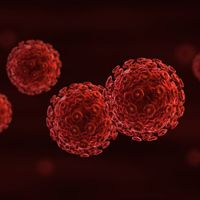Article
More News on the FACTS 001 Trial and Approaches to HIV Prevention in Women
Author(s):
Cultural barriers, poor treatment adherence, and other factors thwart efforts to provide effective anti-HIV acquisition measures for women in Africa.

With HIV rates in Africa still alarmingly high, new medications that can reduce the risk of transmission of the virus are potentially big news. Unfortunately, it looks like a once-promising approach to HIV risk reduction has failed to show efficacy in a second clinical trial.
At the 2015 Conference on Retroviruses and Opportunistic Infections (CROI), Helen Rees, MD, founder and executive director of the Wits Reproductive Health and HIV Institute in Johannesburg, South Africa, presented results from FACTS 001, a multi-center phase III clinical trial that evaluated the efficacy of pericoital tenofovir (TFV) 1% gel for HIV prevention in women in South Africa.
She said that HIV prevention and HIV incidence are unacceptably high, and a significant problem in Southern and East Africa in particular.
The trial included 3,844 young women age 18-30 who were HIV-negative and sexually active, had no contraindication to TFV, and were randomized irrespective of HSV-2, hepatitis B, or breastfeeding status.
The primary objective was to evaluate the safety and effectiveness of tenofovir 1% gel applied intra-vaginally in preventing sexually transmitted HIV-1 infection among women. The pericoital regimen was to use one application of gel within 12 hours before sex, one application within 12 hours after sex, with no more than 2 gel applications in a 24-hour period. This is the same regimen that was used in a previous study.
Rees said the prior study showed that pericoital application of tenofovir gel “could reduce HIV incidence among women who used it according to instructions, with an incidence rate reduction of 1%.” However, as that was a phase IIB trial, researchers believed a phase III study was necessary to confirm those findings.
Furthermore, the results showed that despite women reporting frequent use of the medicaton, subsequent follow up to measure tenofovir levels did not support these claims of high usage rates -- which reinvigorated investigators’ efforts around adherence.
Rees said, “Our adherence measures really built upon the experience of all the other trials that had gone before us. And we redoubled those efforts. We particularly focused on an individual level, participant-centered counseling supported by SMS’s and many other strategies, and we also had a whole strategy that looked at collective persuasion to try to convince women to use the gel, which included facts clubs, films, and barometers -- all for collective discussion.”
Rees and her team are currently following up the trial until they have 118 observed HIV infections powered to detect 45% product efficacy, with an incidence of 3.5%. The analysis was a modified intent-to-treat analysis using a log-rank test stratified by the site.
“We were only unable to obtain post randomization results in 25 women out of the 2,059 in the randomized group. And, over 90% attended their scheduled visit, which meant that we got overall good follow up in this cohort,” said Rees.
Ultimately, the study results showed that pericoital vaginal TFV 1% gel was safe, but not effective in preventing HIV acquisition in this population. Women used the product on average in conjunction with 50-60% of sex acts (based on semi-objective measures). This was consistent with TFV detection in the CVLs. In women with TFV detected and sexual activity reported, there was evidence of a protective effect.
Rees concluded, “However, the majority of participants in our samples were not able to achieve sufficiently high levels of gel coverage required for protection, and we urgently need a range of prevention options for young women that are easier for them to integrate into their lives. We have extensive social science data, which shows that women’s lives really are the biggest barriers to them to be able to integrate gel use despite a real willingness to try and do it.”




